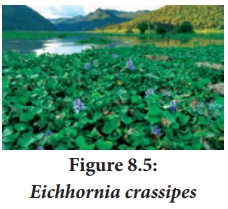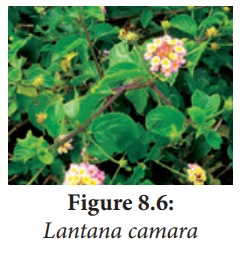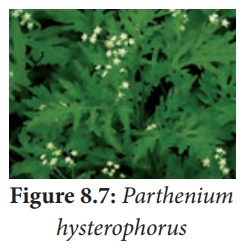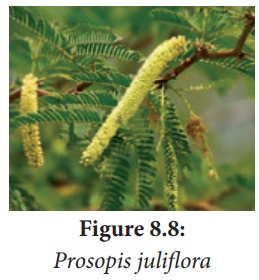Environmental Issues - Alien invasive species | 12th Botany : Chapter 8 : Environmental Issues
Chapter: 12th Botany : Chapter 8 : Environmental Issues
Alien invasive species
Alien invasive species
Invasion of alien or introduced species disrupts ecosystem processes,
threaten biodiversity, reduce native herbs, thus reducing the ecosystem
services (benefits). During eradication of these species, the chemicals used
increases greenhouse gases. Slowly they alter ecosystem, micro climate and
nature of soil and make it unsuitable for native species and create human
health problems like allergy, thus resulting in local environmental degradation
and loss of important local species.
According to World Conservation Union invasive alien species are
the second most significant threat to bio-diversity after habitat loss.
What is invasive species?
A non-native species to the ecosystem or country under
consideration that spreads naturally, interferes with the biology and existence
of native species, poses a serious threat to the ecosystem and causes economic
loss.
It is established that a number of invasive species are accidental
introduction through ports via air or sea. Some research organisations import
germplasm of wild varieties through which also it gets introduced. Alien species
with edible fruits are usually spread by birds.
Invasive species are fast growing and are more adapted. They alter
the soil system by changing litter quality thereby affecting the soil
community, soil fauna and the ecosystem processes.
It has a negative impact on decomposition in the soils by causing
stress to the neighbouring native species. Some of the alien species which
cause environmental issues are discussed below
Eichhornia crassipes
It is an invasive weed native to South America.It was introduced
as aquatic ornamental plant, which grows faster throughout the year. Its
widespread

It affects
the growth of phytoplanktons and finally changing the aquatic ecosystem.
It also decreases the oxygen content of the waterbodies which
leads to eutrophication. It poses a threat to human health because it creates a
breeding habitat for disease causing mosquitoes (particularly Anopheles)
and snails with its free floating dense roots and semi submerged leaves. It
also blocks sunlight entering deep and the waterways hampering agriculture,
fisheries, recreation and hydropower.
Lantana camara
Identified as one of the worst invasive species by Global Invasive
Species Database. It is also an invasive weed native to South America
introduced as ornamental plant. It occupies a widely adaptable range of
habitats.
This species is spread by birds It exerts allelopathic effect,
which reduces the growth of surrounding plants by inhibiting germination and root
elongation. Root removal and bio-control are the best methods to control. Now
tribes are trained to use the stem as fibre for making household materials like
baskets, furniture and even cots.

Parthenium hysterophorus
Parthenium hysterophorus native to South America introduced
accidently into many regions of the world along with imported food grains. It
is a harmful weed in the forest which suppresses the growth of native species
and reduces the availability of fodder
for animals

It infests pastures and farmland causing often loss of yield. The
plant produces allelopathic chemicals that suppress crop and native plants and
its pollen causes allergic rhinitis and asthma, dermatitis in humanbeing.
Prosopis juliflora
Prosopis juliflora is an invasive species native to Mexico and
South America. It was first introduced in Gujarat to counter des er t if icat
ion and later on in Andhra Pradesh, Tamil Nadu as a source of firewood. It is
an aggressive coloniser and as a consequence the habitats are rapidly covered
by this species. Its invasion reduced the cover of native medicinal herbaceous
species. It is used to arrest wind erosion and stabilize sand dunes on coastal
and desert areas. It can absorb hazardous chemicals from soil and it is the
main source of charcoal.

Related Topics